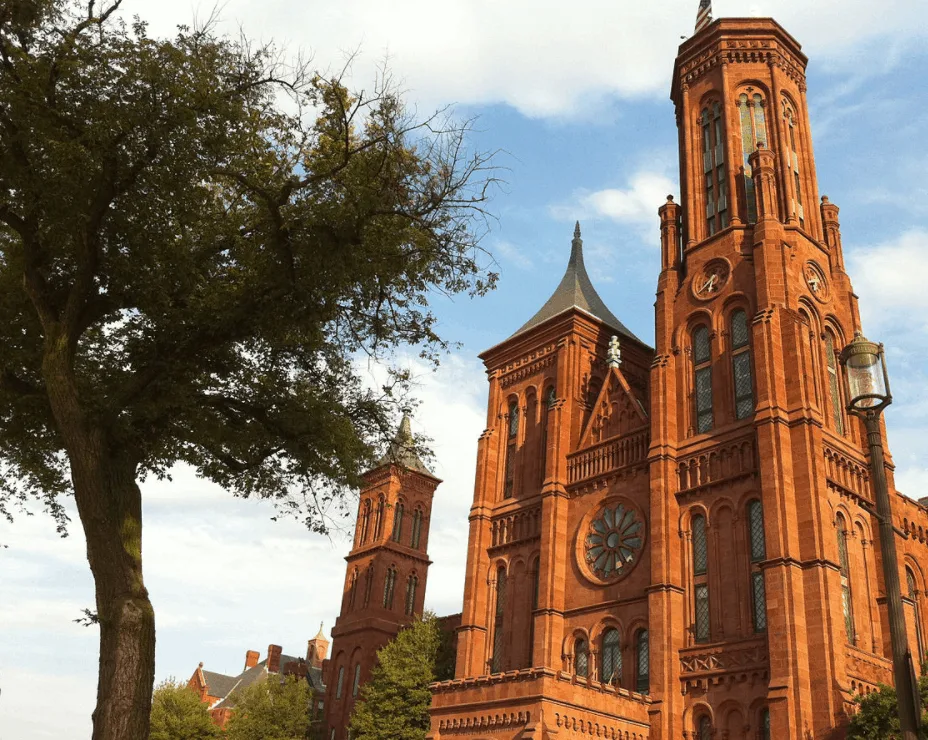Did you know that the first Smithsonian Institution Building is nicknamed “The Castle?”
In this post, you’ll discover the ultimate list of Smithsonian Castle facts, one of the most distinctive buildings in Washington D.C.
1. The Castle is located near the National Mall
The Smithsonian Castle was the first building to be constructed for the Smithsonian Institution. It’s therefore also referred to as the “Smithsonian Institution Building,” and is nicknamed “The Castle” because of its design.
The Smithsonian consists of several research centers and museums which are managed by the government of the United States.
It’s located right near the National Mall on Jefferson Drive, behind the Smithsonian Museum of African Art and the Sackler Gallery, and in between the Washington Monument and the Capitol Building.
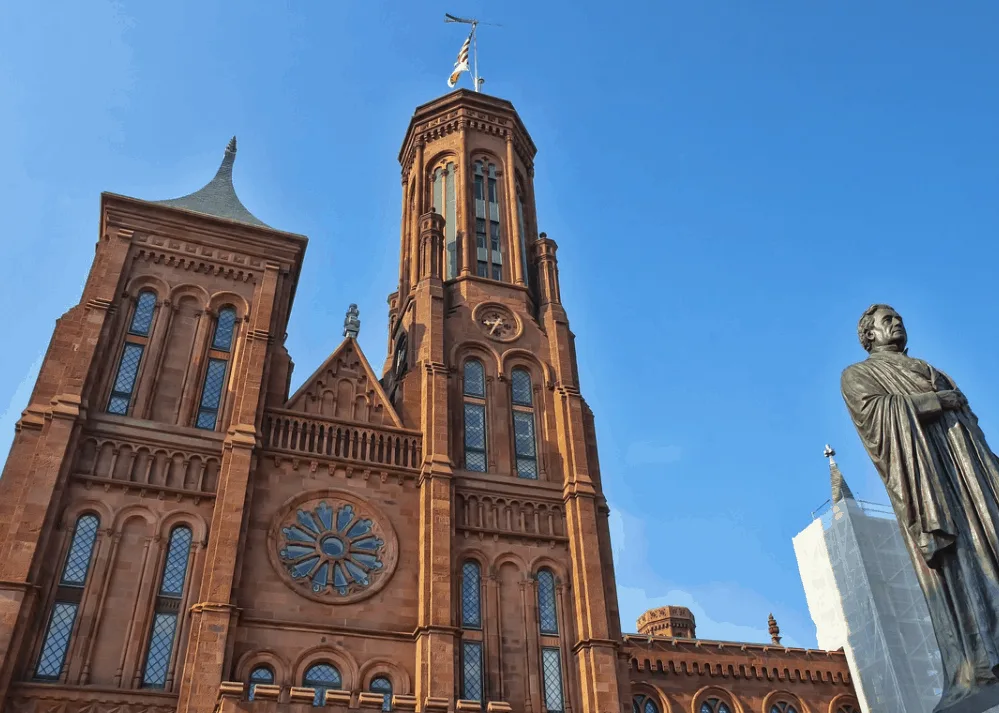
2. It was built halfway through the 19th century
Construction of the building started all the way back in 1847 and just two years later, the first secretary of the institution, Joseph Smith, and his family moved into the East Wing.
The building was financed by the bequest of $500,000 from James Smithson (1765-1829), a renowned English scientist after which the institution was named.
The exterior was completed by 1852 and the exterior by 1855, which marked the completion of the building.

3. The Castle was designed by a renowned architect
The design of the building was in the hands of architect James Renwick, Jr. from New York. His most famous works are the St. Patrick’s Cathedral in New York City and the Renwick Gallery in Washington D.C. His design was chosen through a nationwide design competition which was held in 1846.

Design competitions were quite common and used frequently to determine the design of numerous other buildings as well, including the Jefferson Memorial and Lincoln Memorial to name just a few.
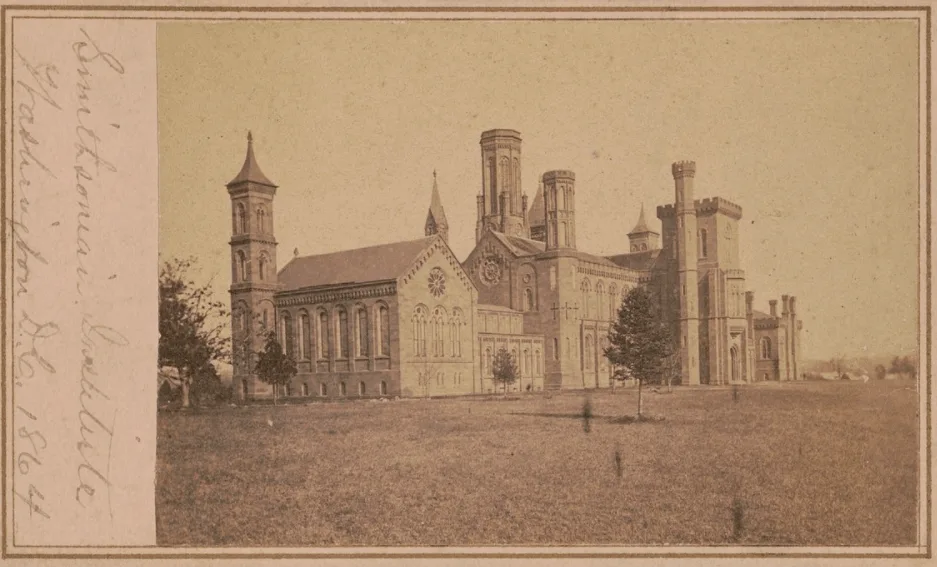
4. He got help from another famous architect
Renwick didn’t have to work at it alone as he got help from another famous architect named Robert Mills. He helped mainly with the interior of the building.
Mills is famously known for the design of the first Washington Monument in Baltimore, Maryland, and one of the most famous monuments in the United States, the Washington Monument, dedicated to the first president of the country.
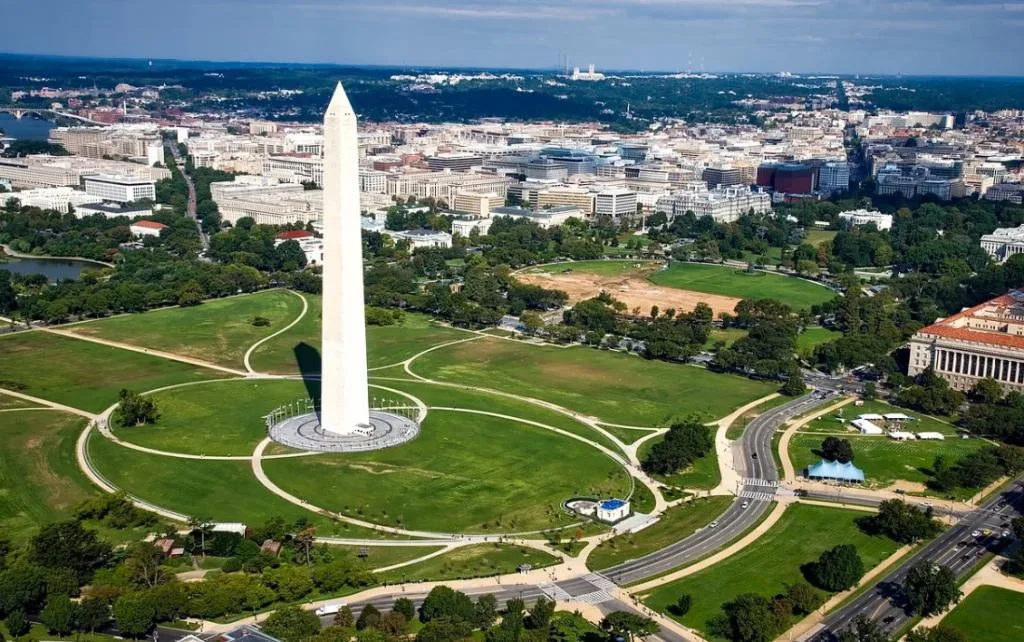
5. The design was chosen to evoke wisdom and knowledge
The architectural style used in the design is a combination of Gothic and Romanesque styles, along with a touch of Collegiate Gothic, a subgenre of the Gothic Revival architectural style.
Probably the most famous buildings in this style are those of the universities of Yale and Princeton, which are just a few of the colleges and universities built in this style.
Using this design has a deeper meaning, as it’s not meant to make students feel as if they’re part of a Harry Potter movie, but rather to evoke wisdom and knowledge, the essence of what these buildings represent.

6. The building was supposed to look completely different
The Smithsonian Institution Building is one of the most distinctive buildings near the National Mall. That’s because it was constructed using Seneca red sandstone. These stones were quarried from the Seneca Quarry in Montgomery County, Maryland.
Most of the other buildings in the area were constructed using granite, marble, and yellow sandstone, and that was the original idea for the Castle as well.
One of the most interesting Smithsonian Castle facts is that to cut the cost of the project, the cheaper red Seneca sandstone was used. The building might have been as white as the U.S. Capitol if another decision was made!
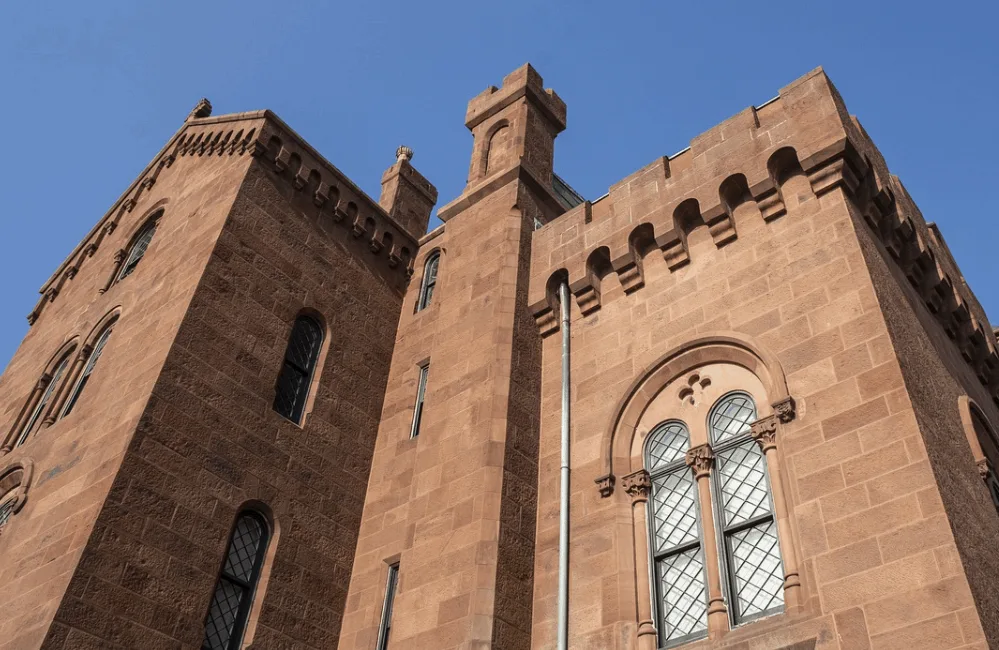
7. The Castle has a total of 9 towers
Apart from the distinctive red Seneca sandstone, the building has a total of 9 towers which gives it a unique look. 4 of these towers actually have space that can be occupied, while the other 5 merely have staircases and serve a decorative purpose.
The main tower on the south side stands 91 feet (28 meters) tall and is 37 feet (11 meters) square. The north side has 2 towers of which the highest stands 145 feet (44 meters) tall.
8. The building has a bell tower as well
The second-tallest tower of the Castle is a bell tower, which is 17 feet (5.2 meters) square and stands 117 feet (36 meters) tall.
This bell tower is located on the northeast corner of the building.
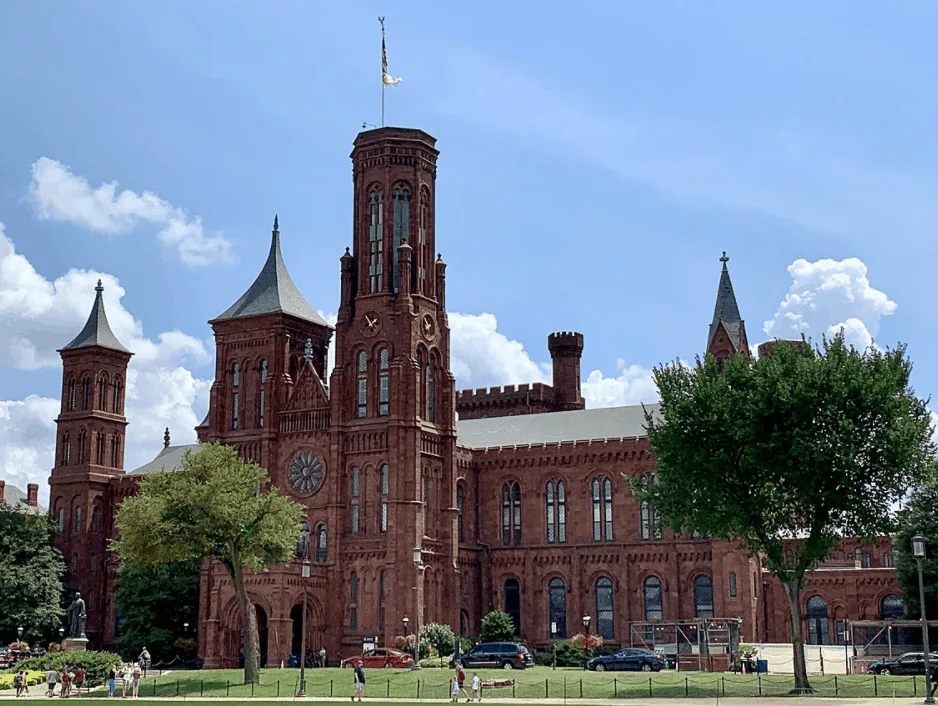
9. The Castle wasn’t exactly fireproof initially
One of the most remarkable Smithsonian Castle facts is that a structural collapse during construction in the year 1850 resulted in increased fireproofing for the building.
This didn’t help though because 15 years later, in the year 1865, a massive fire broke out and destroyed numerous valuable items, including 200 paintings by John Mix Stanley, all the contents of the public libraries of Alexandria, Virginia, and Beaufort, South Carolina, and the correspondence of James Smithson and Henry’s papers.
The building was completely renovated in the following years between 1865 and 1867.
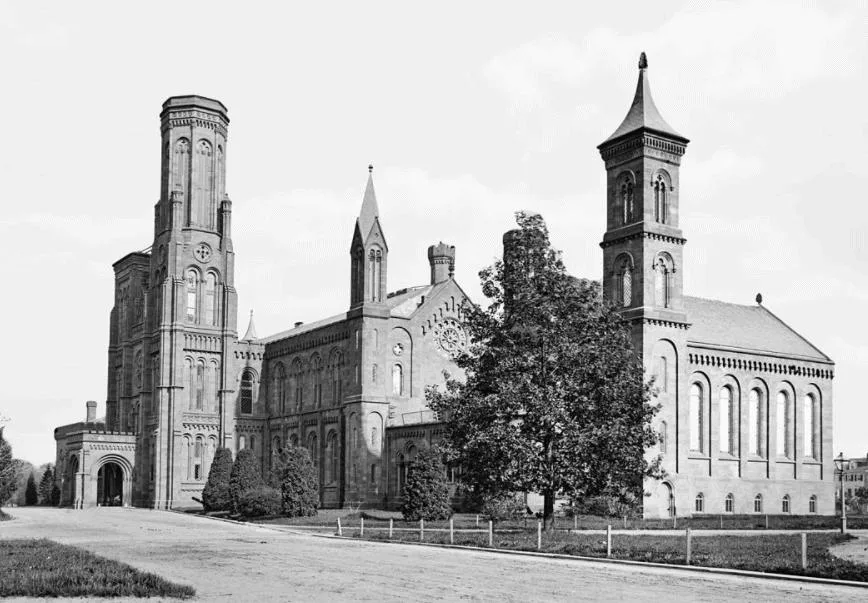
10. The building didn’t have modern facilities until the late 1960s
Even though electrical lights were installed in the late 19th century, the building could really be referred to as a castle before the late 1960s as it didn’t have any modern facilities yet back then.
A major renovation took place between 1968 and 1970 which ensured the Castle was equipped with modern electrical systems, elevators, and heating, ventilation, and air conditioning systems.
11. A 19th century American Victorian garden was built in 1987
Enid Annenberg Haupt, an American author, and philanthropist donated about USD 3 million for an American Victorian-style garden to be designed in front of the Smithsonian Castle.
Her wish was fulfilled as the 4.2-acre public garden was opened on May 21, 1987, and was named after the generous woman who made it happen as it’s called the “Enid A. Haupt Garden.”

12. The founding father of the Smithsonian is buried at The Castle
One of the most fascinating Smithsonian Castle facts is that the tomb of the founding father of the Smithsonian Institution, the man who made the construction of the Castle possible, James Smithson, is located right inside the building.
His tomb can be found near the north entrance of the building.
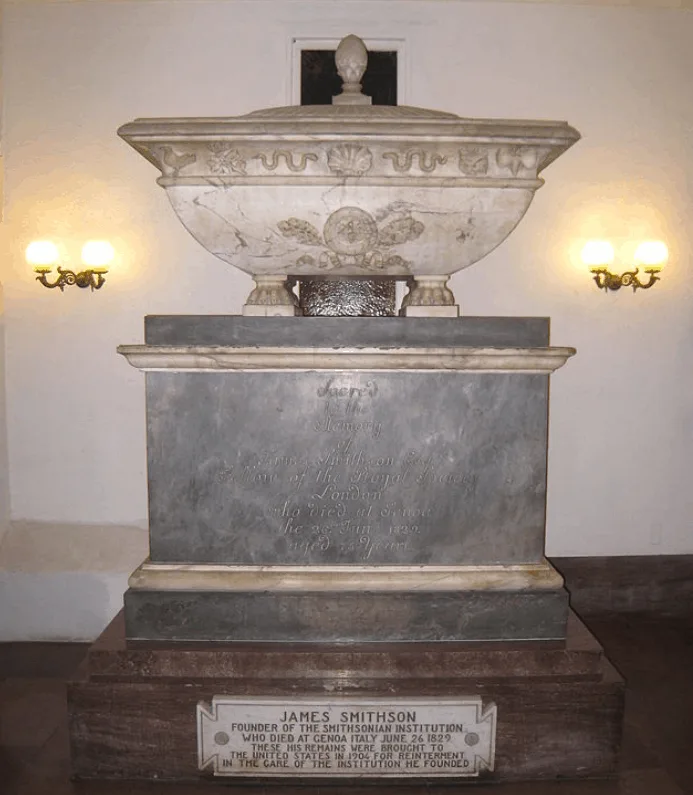
13. The Castle is a National Historic Landmark
Even though the building was completed in 1855, it was only designated as a National Historic Landmark in the year 1965.
A designation means that it’s recognized by the United States Government as a building of outstanding historical significance.
14. The Castle houses offices and a visitor center
So what is the Smithsonian Institution Building being used for today?
The Castle houses the administrative headquarters of the Smithsonian Institution, a collection of 19 museums, 21 libraries, 9 research centers, and a zoo. Altogether, the Smithsonian holds a total of 154 million items!
To maintain its operations and welcome 30 million yearly visitors free of charge, the Smithsonian has a budget of about USD 1.2 billion!
It’s fair to conclude that the Smithsonian is a massive operation for the benefit of human beings, and the Smithsonian Castle is the building that connects all the dots.
